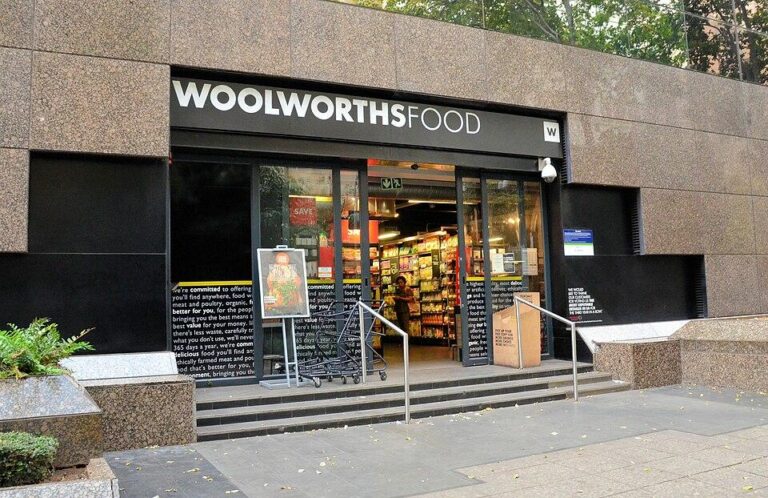Australia’s Woolworths has reported sales figures that fell short of market expectations, triggering a sharp decline in its share price. The retail giant’s weaker-than-anticipated performance highlights ongoing challenges in the competitive Australian supermarket sector, raising concerns among investors and analysts about future growth prospects. This development comes as Woolworths navigates shifting consumer behaviors and mounting cost pressures in a volatile economic environment.
Australia Woolworths Reports Disappointing Sales Performance Impacting Market Confidence
Woolworths, one of Australia’s leading supermarket chains, has reported sales figures falling short of market expectations, triggering a sharp decline in its share price. The disappointing performance is attributed to a combination of supply chain disruptions, rising operational costs, and weaker consumer spending amid economic uncertainties. Investors quickly reacted to the news, reflecting shaken confidence in the retailer’s near-term growth prospects.
Key factors influencing the subpar sales results include:
- Increased competition from discount chains cutting into Woolworths’ market share
- Inflationary pressures impacting consumer purchasing power
- Logistical challenges causing inventory shortages and product delays
| Quarter | Reported Sales Growth | Market Expectation |
|---|---|---|
| Q1 2024 | +1.8% | +3.2% |
| Q2 2024 (Forecast) | +2.0% | +3.5% |
Analyzing Key Factors Behind Woolworths Sales Decline and Consumer Behavior Shifts
Woolworths’ recent dip in sales performance highlights a complex interplay of external and internal challenges. Rising inflation has squeezed consumer purchasing power, prompting shoppers to cut back on discretionary spending across Woolworths’ product segments. Moreover, intensified competition from discount retailers and online grocery platforms has eroded the supermarket giant’s market share, forcing Woolworths to revise its pricing strategies amid shrinking margins. Operational disruptions, including supply chain bottlenecks and labor shortages, have further compounded the sales downturn, impacting product availability and customer satisfaction levels.
Analyzing consumer behavior reveals significant shifts that have not favored Woolworths in the current retail landscape. There is a growing preference for value-driven shopping and increased demand for private-label brands, areas in which Woolworths is now racing to innovate. Additionally, the convenience factor plays a crucial role, with more Australians opting for quick, digitally enabled purchases rather than traditional in-store trips. Key consumer trends include:
- Heightened sensitivity to promotions and discounts
- Increased adoption of online grocery ordering and delivery
- Preference for sustainable and locally sourced products
| Factor | Impact on Sales |
|---|---|
| Inflation | Reduced consumer spending |
| Competition | Loss of market share |
| Consumer Preferences | Shift to discount & online shopping |
| Supply Chain Issues | Product availability problems |
Strategic Recommendations for Woolworths to Regain Market Momentum and Investor Trust
To reverse the recent downward trajectory, Woolworths must prioritize enhancing its customer experience by leveraging data-driven insights for personalized marketing and optimized inventory management. Emphasizing fresh product quality and expanding private label offerings can further differentiate Woolworths in a competitive supermarket landscape. Additionally, streamlining supply chain operations to reduce costs without compromising quality will be critical for sustaining profitability and restoring investor confidence.
Strategic focus should also include boosting digital engagement through improved e-commerce platforms and seamless omnichannel integration. Strengthening community ties and sustainability initiatives could play a pivotal role in rebuilding brand loyalty. Key actions include:
- Investing in technology to enhance personalized promotions and demand forecasting.
- Expanding convenience options like rapid delivery and click-and-collect services.
- Reinforcing sustainability credentials via waste reduction and ethical sourcing.
- Engaging shareholders through transparent communication of turnaround plans.
| Focus Area | Short-Term Action | Expected Outcome |
|---|---|---|
| Customer Experience | Launch personalized loyalty campaigns | Increase repeat visits by 10% |
| Supply Chain | Optimize supplier contracts | Cost savings of 5-7% |
| Digital Growth | Enhance mobile app functionality | Boost online sales by 15% |
| Sustainability | Implement packaging reduction targets | Improve brand perception |
In Conclusion
As Woolworths navigates this challenging period of softer sales performance, market watchers will be closely monitoring the retailer’s strategic responses and earnings outlook in the coming quarters. The significant share price decline underscores investor concerns about the company’s ability to regain momentum amid evolving consumer trends and competitive pressures. Further updates from Woolworths and detailed financial results will be critical in assessing its path forward in Australia’s dynamic retail sector.




